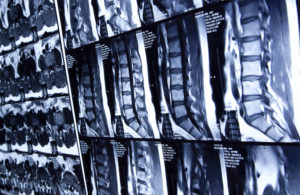I Got Tuberculosis From a Contaminated Bone Graft – Can I Sue?
Bone graft materials and bone repair products, when prepared, packaged and handled correctly, are supposed to be sterile. If you, or your loved one, contracted Tuberculosis directly from the bone graft material, you may be able to sue for compensation. A packaged bone graft contaminated with Tuberculosis (or any infectious disease) would generally be considered a defective product. A successful lawsuit will typically require being able to show that your infection came from the bone repair material itself. Because these types of cases may be legally complex, it is important to consult with an experienced legal team. Pritzker Hageman has a team of infectious disease lawyers who can answer your questions and determine what kind of case you have.
Contact our Infectious Disease Attorneys
Initial consultations are always 100% free. You never pay anything at all unless we collect compensation for you.
2023 Aziyo Biologics Recall of Viable Bone Matrix Products, Outbreak
Aziyo Biologics has issued a recall for its viable bone matrix products after they were linked to a tuberculosis outbreak that sickened five people, killing one of them. The products are made from human tissue and the patients who became ill received bone grafts created from a single donor. Thirty-six other patients who had the products implanted are being treated as though they have tuberculosis.
2021 FiberCel Bone Matrix Recalled After Being Linked to Tuberculosis Outbreak
FiberCel is a bone repair allograft product, more commonly known as a “bone graft”, made from human tissue. It is most commonly used in spinal surgeries, but is also sometimes used to repair bone throughout the body. FiberCel is manufactured by Aziyo Biologics and is distributed by Medtronic. Aziyo recalled 154 units of FiberCel on June 2, 2021 after multiple recipients tested positive for Tuberculosis. A CDC team was deployed to Delaware to investigate the outbreak and assess prevention and treatment options.
113 patients are known to have received implants from the recalled FiberCel batch and 105 patients have already undergone treatment for Tuberculosis. While the product was shipped to 37 hospitals in 20 states between March 3 and April 4, the majority of infections have been reported in Delaware and Indiana.
The CDC recommends that all patients who underwent surgery with FiberCel should be treated for Tuberculosis disease, even if they are not showing any symptoms.
Tuberculosis Symptoms and Complications
Mycobacterium tuberculosis is the bacteria that causes causes Tuberculosis (often abbreviated as “TB”). Typical Tuberculosis symptoms include fever, night sweats, fatigue, chest pain and coughing (including coughing up blood). Tuberculosis from a bone graft might also lead to an increased risk of significant local infection of the tissue surrounding the graft site, including spinal tissue, and a risk of systemic infection (throughout the body).
Symptoms can show up as early as one day after infection or take as long as three months. Some people may be infected and show no obvious symptoms at all.
People who become sick with Tuberculosis are at risk of multiple complications including:
- Kidney disease
- Liver damage
- Lung damage
- Damage to other tissue around the infection site
- Death
- Infectiously spreading the disease to others
Treatment for graft-related TB infection has generally consisted of a four-drug antibiotic cocktail and hospital readmission is likely. Additional surgeries may also be required. In cases of persistent infection or organ damage, additional surgical and supportive medical care and long term treatment may also be necessary.
If you or someone you love contracted Tuberculosis from contaminated bone graft material, you may be eligible for compensation. Please call 1-888-377-8900, text 612-261-0856, or fill out the form below for a free consultation.
